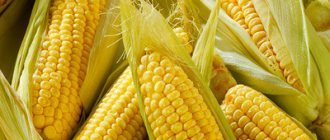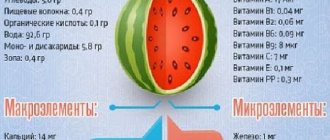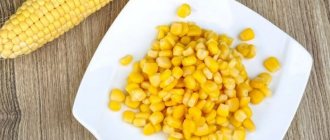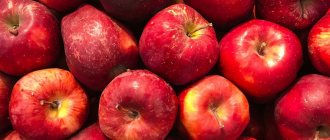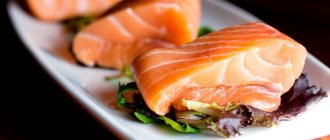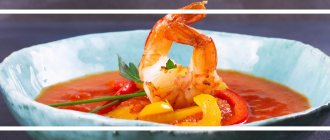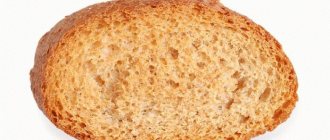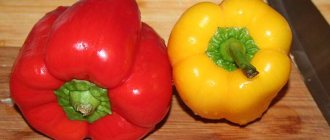All over the world, fish is considered an extremely healthy product.
It is part of diets aimed at losing weight, strengthening the cardiovascular system, and correcting diabetes. For many people, fish has become the personification of a balanced diet and the best substitute for meat. However, is everything so clear regarding patients with gastritis? Let's consider the effect of fish dishes on the gastrointestinal tract.
What is the benefit
The main advantage of fish products is their biochemical composition. They are rich in proteins, optimally balanced in terms of essential amino acids, vitamins (A, D, B) and minerals (iodine, fluorine, zinc, copper). It is these components that determine the beneficial effect of fish on the body:
- regulation of metabolism;
- normalization of cholesterol;
- prevention of cardiovascular diseases;
- stabilization of thyroid function;
- strengthening bone tissue;
- activation of the brain.
Fish generally has a positive effect on the stomach due to its ease of digestion. But its digestibility largely depends on the fat content and method of preparation.
Information. Sometimes fish does more harm than good. Caught in polluted waters, it can become a source of heavy metals and other substances toxic to the human body. And if fish dishes are not properly cooked, there is a risk of infection with parasitic diseases.
Which one to choose
When talking about the properties of fish products, it is necessary to take into account that they are determined primarily by the type of fish. For example, sea fish is considered more useful because it contains more trace elements (especially fluorine and iodine). However, it also contains more extractive substances, which is not beneficial for patients with hyperacid gastritis.
Fat content indicators are very important. According to their size, fish varieties are divided into 3 groups:
- Skinny (up to 4% fat): river perch, pike perch, navaga, hake, pollock, cod, flounder, grenadier, pike, trout.
- Medium fat (4-8% fat): sea bass, carp, pink salmon, salmon, catfish, herring.
- Fatty (over 8% fat): some types of herring, halibut, all sturgeon, lamprey, eel.
For inflammation of the stomach, the permitted fat content is 4% or less. Fatty varieties are rich in polyunsaturated fatty acids and are useful for people with heart and vascular diseases, but their use for gastritis can negatively affect the digestive processes. The calorie content of different types of fish is also very variable. Nutritional value of 100 g of product in increasing order:
- cod – 69 kcal;
- pollock – 79;
- flounder – 83;
- crucian carp – 102;
- sea bass – 122;
- pink salmon – 147;
- sturgeon – 164;
- salmon – 217 kcal.
Useful properties of rice
So, what are the beneficial properties of rice? It consists of 80% complex carbohydrates, the remaining 10% is protein. That's why you feel full after eating rice porridge. It provides the body with a good supply of energy.
There are no less nutrients in rice than in buckwheat. There is especially a lot of phosphorus and calcium, B vitamins, and iodine. And properties such as toxin removal and absorption make the dish indispensable for gastrointestinal disorders.
How to cook
The method of preparing fish dishes is also important. Smoked, salted, fried, pickled, and canned fish are definitely prohibited for gastritis. Salt, spices and preservatives irritate the gastric mucosa, increasing inflammation. Carcinogenic substances formed during frying and smoking are difficult to digest and provoke the development of cancer.
You can eat salted fish only after soaking or with a slight addition of salt. The fish can be stewed, boiled, steamed, in a slow cooker, or baked in the oven.
It goes well with thermally processed vegetables: potatoes, carrots, onions, zucchini. During the cooking process, many people like to sprinkle the fish with lemon juice, which successfully emphasizes its taste.
If the acidity of the gastric contents is high, you need to be careful with such additives. Of course, a few drops of lemon juice will not cause serious damage, but you still shouldn’t generously cover the fillet with pieces of citrus.
What to remember
Nutrition for chronic gastritis should be complete.
However, it is selected so as not to irritate the gastric mucosa physically and mechanically. When the condition of the digestive organs improves, you can begin to eat almost as before the disease, but excluding fatty and spicy foods and taking additional vitamin complexes. Tags:
- Diets
- Diet
- Stomach
1 comment • To leave a comment you must be an authorized user
- Larisa46966 Thanks for the article! Regarding tea, the truth has been written very briefly. Gastritis is an unpleasant disease ((think 10 times before you drink or eat something. I suggest you read the article - https://medvisor.ru/articles/gastroenterologiya/chai-pri-gastrite/ about the effect of tea on the stomach with gastritis. All -I still want tea every day...Very useful information, understandable)
In the forefront
Some varieties of fish are widely popular and popular among the people. They are present on the festive table and on the daily menu. However, many people don’t even think about how safe they are for the stomach.
Herring
As a rule, herring is salted or smoked.
In the latter case, it is clearly contraindicated in patients with gastritis, regardless of its form. But with salted fish everything is a little more complicated. Since salt significantly stimulates the production of hydrochloric acid, it is better to avoid it if the pH of the gastric contents is low. In hypoacid conditions, you can eat herring only after soaking and in small volumes, since it is a fairly fatty product. It is better to soak it in milk or cooled tea for 8-12 hours. After soaking for twelve hours, the salt concentration in the fish decreases by 3.5 times. This herring should be eaten in combination with neutral foods like mashed potatoes or rye bread.
Advice. You can cook herring yourself in a lightly salted version. Stir 1 tbsp in 3 cups of boiling water. l. salt and 1 tsp. Sahara. Place 2-3 fish in the brine and put them in the refrigerator for a couple of days. The concentration of salt in such herring is very small, so it can be eaten without prior soaking.
Mackerel
This fish is a record holder for the content of omega-3 fatty acids, vitamin B12, potassium and phosphorus.
200 g of fish is enough to meet the daily requirement for these substances. However, mackerel is a fairly fatty and high-calorie fish (191 kcal per 100 g), so it can be eaten with gastritis only during the period of remission. Preferred heat treatment methods: baking, steaming, grilling. This fish is safer for patients with hyper- and normoacid inflammation of the stomach, since in conditions of a sufficient (and even excessive) amount of gastric juice it can be completely digested, despite its fat content. And with reduced gastric secretion, when the digestion process is difficult, the amount of mackerel consumed should be limited to one small piece per day.
red fish
Red fish is an extremely healthy product. It is widely used for preparing dishes as part of the Mediterranean diet, which, in addition to fish, includes fresh vegetables and fruits, grains, and olive oil.
Important! It has been proven that if you eat red fish at least once a week, the risk of developing a heart attack is reduced by more than 2 times, and stroke by 22%. In addition, it was noted that residents of coastal areas are less likely to suffer from iodine deficiency.
However, not all red fish are good for gastritis. Fatty varieties such as salmon, chum salmon, and salmon should be avoided. They can be used only during the period of remission by patients with preserved acidity. At elevated pH values, trout is more preferable - this is the most dietary variety of red fish.
Cooking fish should follow the general rules: steamed, in the oven, in a slow cooker. Smoked and salty foods are prohibited. Lightly salted trout can be eaten in small quantities for hypoacid gastritis.
Caviar
When talking about delicious varieties of fish, one cannot fail to mention caviar.
This product is very beneficial for the body due to the content of proteins with a complete amino acid composition, fatty acids, lecithin, minerals, and vitamin A. The negative side is the high concentration of cholesterol in caviar and its ability to stimulate the secretion of digestive juice. That is why the product is prohibited for acute, chronic hyperacid and erosive gastritis.
In hypoacid conditions, it must be strictly limited (no more than 50 g per day) due to the high fat content of the product. And of course, you shouldn’t eat it as part of a sandwich generously greased with butter. It is better to add caviar to dietary salads and sauces. If you absolutely want to make sandwiches with caviar, then you need to take rye bread and replace the butter with soft, low-fat cheese.
You need to be very careful with industrially produced salted caviar. Firstly , it is often too salty. Secondly, it is usually sold in cans, which contain substances that are toxic to the stomach.
The safest way is to salt the caviar yourself. To do this, you need to boil water with 60 g of salt and a couple of bay leaves. Pour brine over the caviar, cleared of films, and soak in it for 20-30 minutes. Then drain the liquid through a sieve, let it drain well, and place the caviar in a glass container. This way you can prepare red caviar, pike caviar, carp caviar, cod caviar and other river or sea fish. It can be stored in the refrigerator for no more than 3 days.
Consumption of buckwheat for gastritis
Before you start cooking, you need to find out from your doctor exactly whether you can eat buckwheat if you have gastritis. This product is neutral because it does not pose a risk to patients. However, it is still worth exercising maximum caution, especially when it comes to consuming porridge during an exacerbation or special forms of the disease.
Cereals can be used in different variations. Porridges are often prepared from it, but cooking offers to diversify the patient’s menu and prepare soups, cutlets, porridges, casseroles, zrazy, etc. However, the proposed recipes cannot be called universal, since they need to be used for a specific disease.
Buckwheat dishes for gastritis with high acidity
Fry a small amount of porridge on a baking sheet or use a frying pan for this. Do not add any seasonings or oil. Use unprocessed grains for frying; after heat treatment, they should not get a dark brown, but a golden hue. Grind the finished product in a coffee grinder until it becomes grainy.
Before you start cooking, you need to find out from your doctor whether you can eat buckwheat for gastritis.
You can make flatbreads out of it, use it to make cutlets, or eat it raw along with other foods. Take a few teaspoons with water or compote.
Buckwheat dishes for gastritis with low acidity
It is not necessary to prepare the product only by heat treatment. You can use another method, especially when you need to get the maximum amount of valuable and nutritious elements from a dish. To prepare the porridge, use 300 ml of water (it should be hot), as well as 3 tbsp. l. porridge. Cover the container with a lid and leave overnight.
The finished buckwheat is blended in a blender until it becomes semi-liquid. Instead of water, you can use hot milk in the same proportion. For each meal, it is recommended to make a new portion of porridge according to this recipe. If it is difficult to eat uncooked cereal, you can reduce the portion and eat the dish every day for two weeks.
Buckwheat dishes for exacerbation of gastritis
When the disease worsens, the patient may feel pain, develop flatulence, belching, and unpleasant breathing. At this time, the diet should be especially strict. Eating any food should be portioned; overeating, including buckwheat porridge, is unacceptable. The product should be consumed strictly in a ground or crushed state.
For different forms of the disease
In the acute stage of the disease, it is allowed to eat skinny fish in the form of steam cutlets with a minimum amount of salt. As the exacerbation subsides, the diet gradually expands, and the possibility of consuming fish products is determined by the type of acidity.
With normal and hyperacid inflammation, you can eat lean and medium-fat varieties of fish. Enough has already been said about the methods of their preparation; they do not depend on the specific type of inflammation. You can cook the fish as a whole piece; it is not necessary to mince it. The amount of spices and oil must be strictly regulated. It is allowed to sprinkle the fish with a little olive oil during cooking.
For erosive gastritis , the same fish varieties are allowed, but it is better to make boneless cutlets or fillets from them so as not to injure the surface of the erosions. With this type of inflammation, salted (even lightly salted) fish is strictly prohibited.
Against the background of a hypoacid and atrophic process, preference should be given to low-fat fish products without adding oil. With a low concentration of hydrochloric acid and digestive enzymes, fatty foods are not completely digested, rotting processes in the stomach begin, and inflammation intensifies.
Precautionary measures
When changing your diet, carefully monitor your condition.
Contact a gastroenterologist if you notice that after eating you experience:
- sharp or aching pain in the stomach;
- nausea;
- heartburn or burning sensation in the stomach;
- constipation or diarrhea;
- discomfort, heaviness, feeling of bloating.
After additional examination, the attending physician will prescribe medications and adjust your diet.
Compare with meat
Proteins of fish origin are absorbed faster and easier than meat proteins.
If on average it takes 2-3 hours to digest fish in the stomach, then for most types of meat it will take 5-6 hours. At the same time, the fish is digested almost completely, and the meat is only 85%. Compared to meat, fish products have lower calorie content and a low concentration of extractive substances that stimulate the production of gastric juice. Therefore, for hyperacid forms of gastritis, fish is safer. The lower content of connective tissue fibers makes it possible to include fish in the diet in uncrushed form, while meat for gastritis is recommended to be minced.
However, it should be noted that fish dishes are more palatable than meat dishes. Therefore, they are not recommended to be included in the daily menu. The optimal frequency of eating fish is 3 times a week. In terms of vitamin and mineral composition, fish and meat are not rivals, but allies. In both products, the content of useful chemical compounds is quite high; they harmoniously complement each other.
Experts' opinion. When asked what is healthier for the body - fish or meat, nutritionists answer unequivocally: both. Alternating meat and fish dishes in the diet is the basis of a balanced diet.
Modifications: 1A and 1B
Diet table No. 1 has two modifications: No. 1A and 1B. For table No. 1A, all dishes are prepared in liquid and porridge form or in the form of mashed puree. It is recommended to eat 6-7 times a day, while vegetables in any form, as well as fruits and bread are strictly prohibited. Such a strict diet is prescribed in the first two weeks of exacerbation of a peptic ulcer, acute or chronic gastritis, as well as a week after gastric surgery.
Table 1B differs from table 1A in the ratio of proteins, fats and carbohydrates and calorie content. Dishes are also prepared in liquid or porridge form, and you need to eat 5-6 times; vegetables, fruits and bread are prohibited. Table No. 1B is prescribed after completion of the course of treatment using table No. 1A.
Recipes
We invite you to prepare dishes that can be eaten for any form of chronic gastritis.
Pike-perch in leek leaves
Compound:
- 400 g pike perch;
- 7 leek leaves;
- 2 onions;
- 1 tsp. lemon juice;
- 3 sprigs of dill;
- 2 tbsp. l. olive oil;
- salt to taste.
Action plan:
- Cut the onion into cubes and simmer in a frying pan until transparent.
- Finely chop the dill.
- Throw leek leaves into boiling water, cook for a couple of minutes, place in a colander and rinse with cold water.
- Cut the pike perch fillet into 2 parts.
- Place 3-4 leek sheets overlapping each other on a cutting board.
- Place the fish on top, lightly salt and sprinkle with lemon juice.
- Place stewed onions and dill on the fillet.
- Wrap the pike perch in onion leaves and place in a covered dish greased with olive oil.
- Bake in the oven for 20 minutes at 180 degrees.
Steamed fish cutlets
Compound:
- 500 g fillet of any lean fish;
- 50 g stale bread;
- 100 ml skim milk;
- 100 g onions;
- 1 egg;
- salt to taste.
Action plan:
- Pass the fish fillet and onion through a meat grinder.
- Soak the bread in milk, chop and mix with minced meat.
- Add egg and salt to taste.
- Form into cutlets.
Cook them in a double boiler or multicooker (in the “Steam” mode) for about 20 minutes.
Healthy porridge recipes for patients with gastritis
Patients are advised to prepare buckwheat porridge with milk.
The volume of ingredients is selected independently depending on preferences. The standard recipe involves using 1 liter of milk per 200 g of cereal. The liquid is brought to a boil, washed buckwheat is poured into it, salt and sugar are added to taste. The dish is kept on the fire until the cereal is boiled. This takes 25-30 minutes. The dish should take on a light pink tint. To prepare pea porridge, take 100-200 g of dry beans. They are filled with water at room temperature and left for 8-10 hours. The fluid is changed. The beans are placed on the fire, brought to a boil and simmered for a long time in a container with thick walls. The dish should acquire a puree-like consistency. A masher or blender will help make the texture even. Add oil or salt to the dish to taste.
